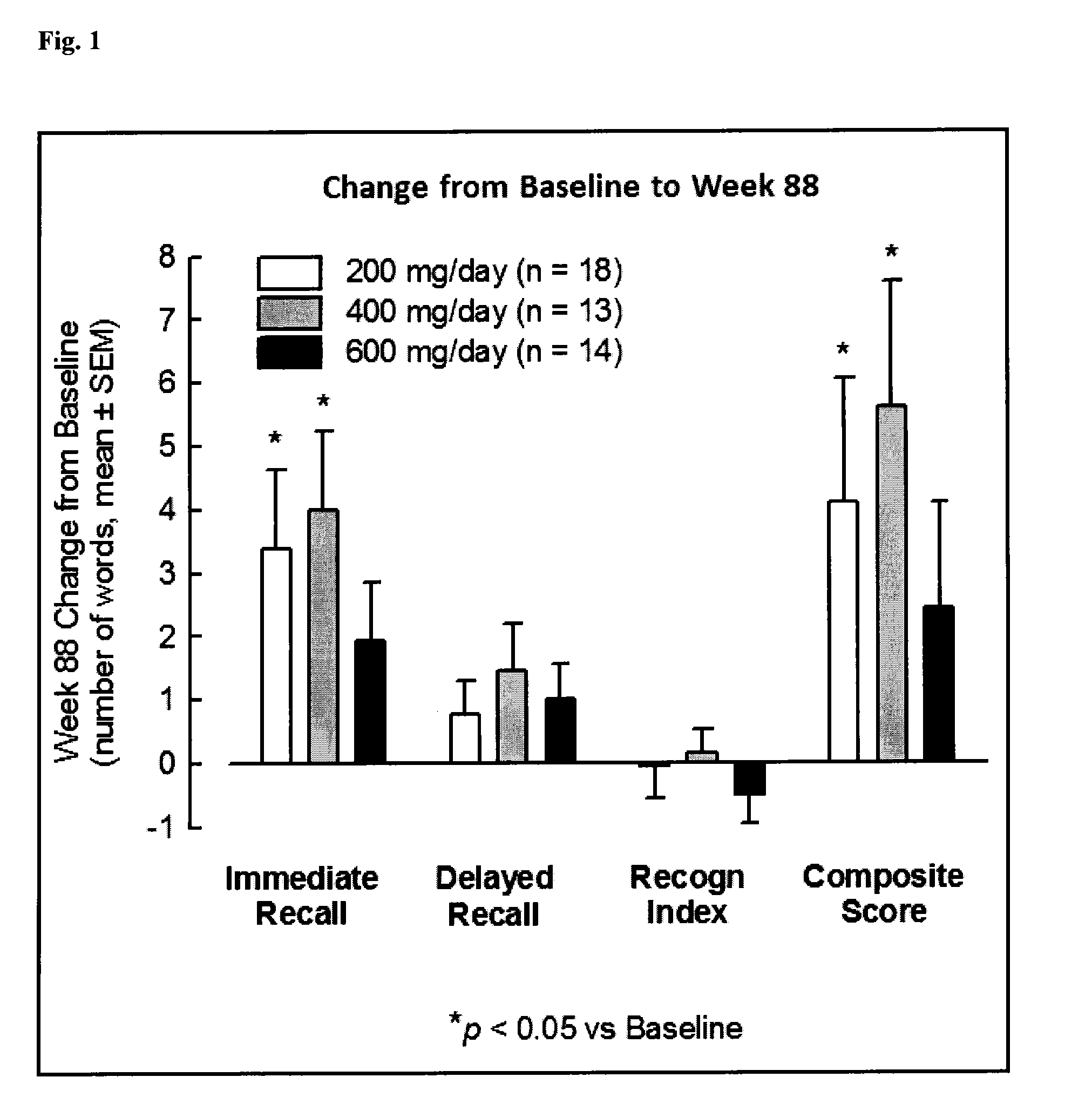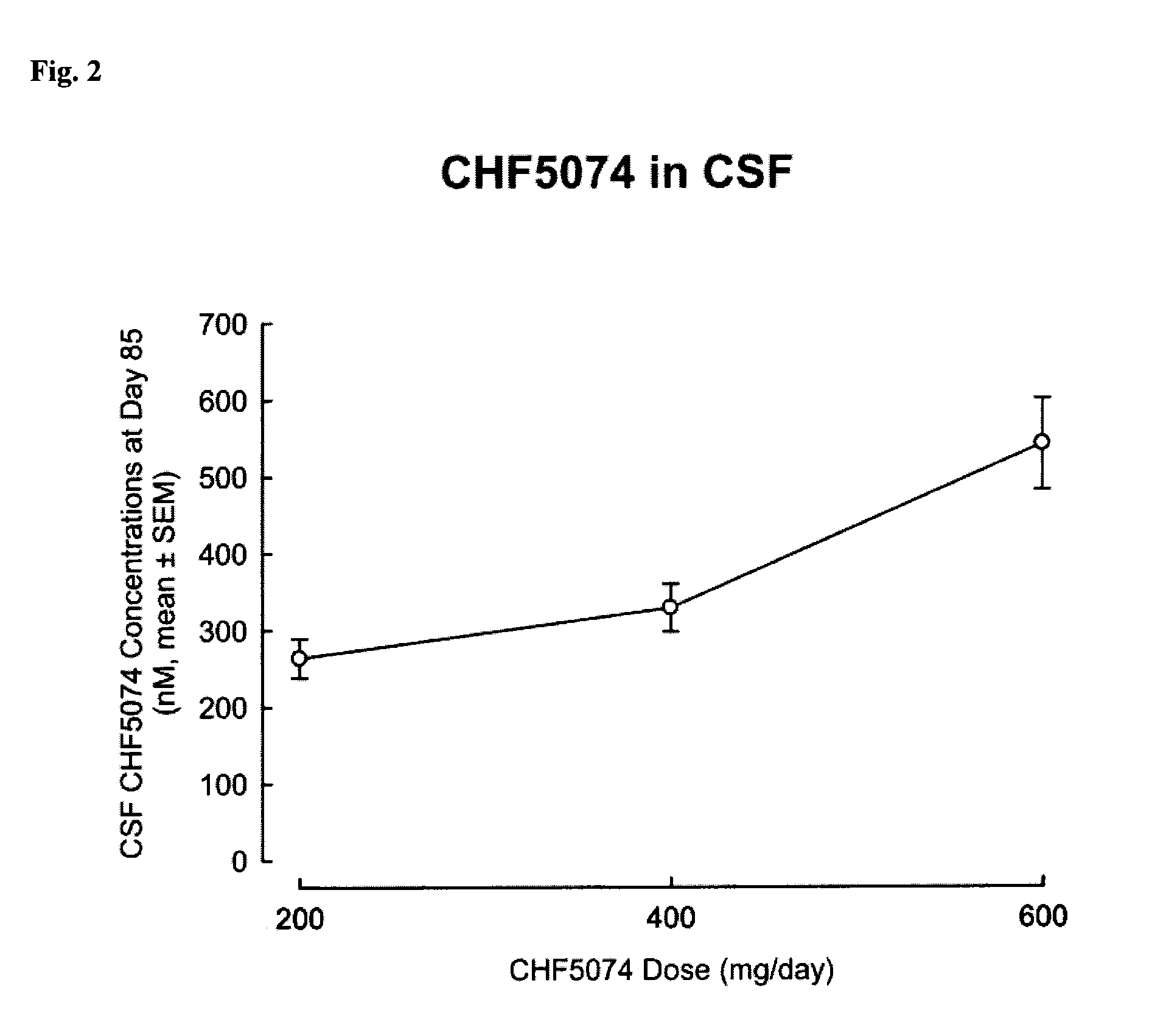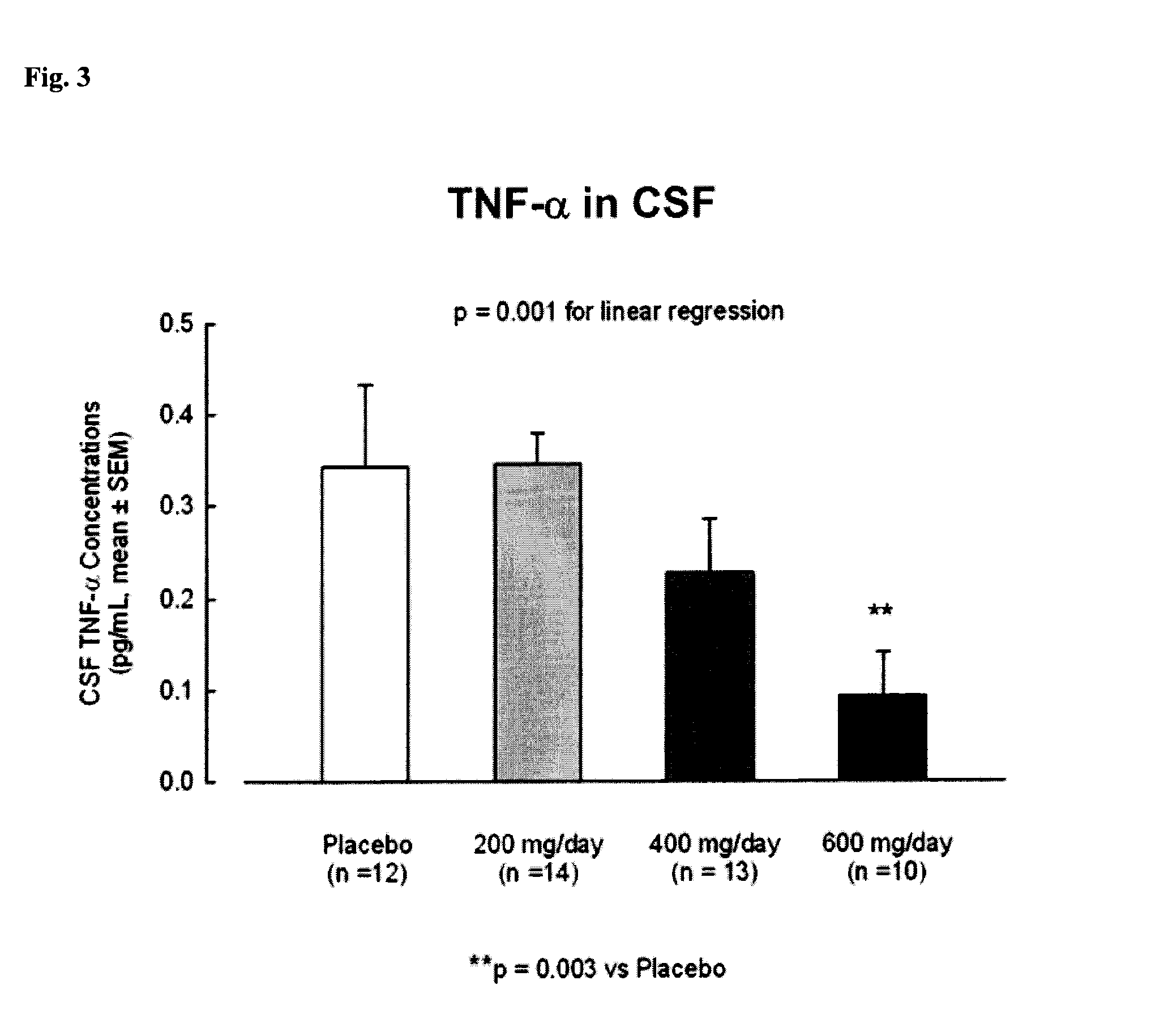Formulations and methods of treating alzheimer's disease and other proteinopathies by combination therapy
- Summary
- Abstract
- Description
- Claims
- Application Information
AI Technical Summary
Benefits of technology
Problems solved by technology
Method used
Image
Examples
example 1
[0311]In Example 1, the safety and tolerability and cognitive effects of CHF 5074 was analyzed after prolonged treatment in MCI (mild cognitively impaired) patients.
[0312]Methods: At the end of a 14-week double-blind, placebo-controlled study in 96 MCI patients evaluating three titrated dose regimens of CHF 5074 (200, 400 and 600 mg / day), patients were given the option to enter a 76-week open label extension study. Patients received CHF 5074 at the dose equal to that of their originally assigned double-blind study cohort. Patients were monitored for vital signs, cardiac activity, neuropsychological performance and safety laboratory parameters.
[0313]Results: Seventy-four patients entered the open label study: 26, 21 and 27 in the 200,400 and 600 mg / day cohorts, respectively. At Study Week 40, 14 patients dropped out: 4, 2 and 8 in the 200,400 and 600 mg / day cohorts, respectively. Three of drop-outs were for adverse events: two in the 600 mg / day group (serum creatinine elevation and w...
example 2
Aim of the Study
[0316]With the goal of optimizing the neuroprotective activity of CHF 5074, the association of CHF 5074 with resveratrol, a SIRT1 activator, will be studied. Resveratrol is a widely studied polyphenol endowed with anti-aging, anti-inflammatory and anti-oxidant properties (Yu W, Fu Y C, Wang W. Cellular and molecular effects of resveratrol in health and disease. J Cell Biochem 2012; 113: 752-759 (which is incorporated herein by reference in its entirety)). Resveratrol acts mainly through major activation of sirtuin 1 (Howitz K T, Bitterman K J, Cohen H Y, Lamming D W, Lavu S, Wood J G, et al. Small molecule activators of Sirtuins extend Saccharomyces cerevisiae lifespan. Nature 2003; 425: 191-196(which is incorporated herein by reference in its entirety)).
Neuronal Cultures
[0317]Primary cultures of mouse cortical neurons C57BL / 6 mice are purchased from Charles River Italia. Primary cortical neurons will be prepared from cortices of 15-day embryonic mice and cultured as...
example 3
[0321]Aim of the Study
[0322]The effects of long-term treatment with CHF 5074, MABT5102A (Crenezumab) and their combination on brain pathology and memory deficits will be evaluated in a transgenic mouse model of AD (Tg2576 mice). It has been shown that MABT5102A binds to soluble, oligomeric and fibrillar β-amyloid deposits (Adolfsson 0, Pihlgren M, Toni N, Varisco Y, Buccarello A L, Antoniello K, et al., An effector-reduced anti-β-amyloid (Aβ) antibody with unique Aβ binding properties promotes neuroprotection and glial engulfment of Aβ. J Neurosci 2012; 32: 9677-89, which is incorporated herein by reference in its entirety). Crenezumab has an IgG4 backbone which reduces effector function.
Animals and Treatments
[0323]Mice over-expressing the human APP gene carrying the Swedish double mutation (K670N / M671L) under the transcriptional control of the hamster prion protein promoter are used (Tg2576 mice). Only female mice will be included in the experimental groups. Animals of 6-month of a...
PUM
| Property | Measurement | Unit |
|---|---|---|
| Mass | aaaaa | aaaaa |
| Mass | aaaaa | aaaaa |
| Mass | aaaaa | aaaaa |
Abstract
Description
Claims
Application Information
 Login to View More
Login to View More - R&D
- Intellectual Property
- Life Sciences
- Materials
- Tech Scout
- Unparalleled Data Quality
- Higher Quality Content
- 60% Fewer Hallucinations
Browse by: Latest US Patents, China's latest patents, Technical Efficacy Thesaurus, Application Domain, Technology Topic, Popular Technical Reports.
© 2025 PatSnap. All rights reserved.Legal|Privacy policy|Modern Slavery Act Transparency Statement|Sitemap|About US| Contact US: help@patsnap.com



